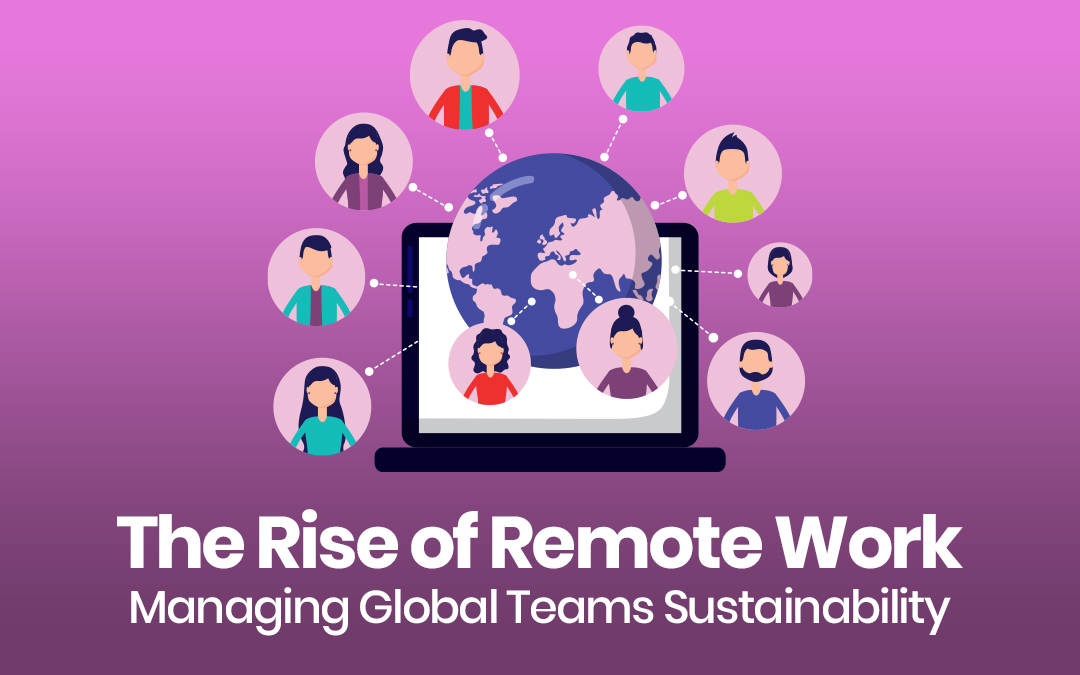
In today's rapidly evolving business landscape, you are likely witnessing the unprecedented rise of remote work. As organizations embrace this paradigm shift, managing global teams sustainably has become a critical challenge. This article explores leveraging IP geolocation and cutting-edge remote work tools to optimize employee connectivity while minimizing unnecessary travel. You will discover greener advices for fostering collaboration across borders, reducing your company's carbon footprint, and embracing eco-friendly technologies. Implementing this advice will enhance productivity and contribute to a more sustainable future. Learn how to navigate the complexities of global team management while prioritizing environmental responsibility in this comprehensive guide.
The Benefits of Remote Work for Sustainability
Remote work has become a powerful tool for companies to enhance sustainability while managing global teams effectively. By embracing this model, organizations can significantly reduce their carbon footprint and contribute to a greener future.
Reduced Commuting Emissions
One of the most immediate benefits of remote work is the dramatic reduction in daily commutes. With employees working from home, vehicle emissions substantially decrease, improving air quality and reducing greenhouse gas production. This shift aligns perfectly with greener advice for corporate sustainability initiatives.
Optimized Resource Consumption
Remote work naturally leads to lower energy consumption in office spaces. Companies can downsize their physical footprints, reducing heating, cooling, and lighting needs. This optimization extends to paper usage and other office supplies, minimizing waste and resource depletion.
Technology-Driven Sustainability
The adoption of remote work tools and green technology goes hand in hand. Video conferencing, cloud-based collaboration platforms, and digital document management systems facilitate seamless remote operations and contribute to sustainability efforts. These technologies enable teams to connect globally without the need for carbon-intensive travel, embodying the essence of greener advice for modern businesses.
Managing a Distributed Team Successfully
Establishing Clear Communication Channels
Effective communication is paramount in the era of remote work. Implement robust digital platforms that facilitate seamless interaction across time zones. Utilize video conferencing tools, instant messaging apps, and project management software to keep your global team connected and aligned. Remember, clear communication is one of the greener pieces of advice for reducing unnecessary travel and minimizing your company's carbon footprint.
Fostering a Unified Company Culture
Cultivating a solid company culture is crucial despite geographical distances. Organize virtual team-building activities, celebrate milestones together, and create opportunities for casual interactions. This approach boosts morale and indirectly supports sustainability by reducing the need for in-person gatherings.
Leveraging Green Technology
Embrace eco-friendly remote work tools to enhance productivity while minimizing environmental impact. Cloud-based solutions, energy-efficient hardware, and intelligent scheduling apps can significantly reduce your team's carbon footprint. By following this greener advice, you are managing a global team effectively and contributing to a more sustainable future.
Tools and Tips for Optimizing Remote Collaboration
Leveraging Technology for Seamless Communication
In today's digital landscape, numerous tools facilitate efficient remote collaboration. Video conferencing platforms like Zoom and Microsoft Teams have become indispensable for face-to-face interactions, while project management software helps teams stay organized and on track. Slack and Microsoft Teams offer instant messaging capabilities for real-time communication that keep global teams connected.
Embracing Green Technology
Companies seeking greener advice for sustainable operations are turning to eco-friendly tech solutions. Cloud-based services reduce the need for energy-intensive on-site servers, while innovative scheduling tools minimize unnecessary virtual meetings, conserving energy. Additionally, digital document sharing and e-signature platforms significantly reduce paper waste, aligning with sustainability goals.
Fostering a Culture of Asynchronous Work
Successful global teams often adopt asynchronous communication practices to accommodate diverse time zones. This approach allows flexibility and reduces the pressure for immediate responses, leading to more thoughtful interactions and better work-life balance. By implementing transparent documentation processes and utilizing collaborative tools like Google Workspace, teams can share information effectively across time differences, promoting productivity while adhering to greener advice for sustainable remote work.
Conclusion
As you navigate the rise of remote work, managing global teams sustainably becomes paramount. You can effectively coordinate your distributed workforce by leveraging IP geolocation and optimizing connectivity while minimizing unnecessary travel. Embracing remote work tools, including green technology solutions, enhances productivity and contributes to a reduced carbon footprint. Every virtual meeting and digital collaboration represents a step towards greener business practices. By following this greener advice, you are not just adapting to the new work paradigm but actively shaping a more sustainable future. Implement this advice thoughtfully, and watch as your global team thrives in this evolving remote work landscape.
Share this post
Leave a comment
All comments are moderated. Spammy and bot submitted comments are deleted. Please submit the comments that are helpful to others, and we'll approve your comments. A comment that includes outbound link will only be approved if the content is relevant to the topic, and has some value to our readers.

Comments (0)
No comment